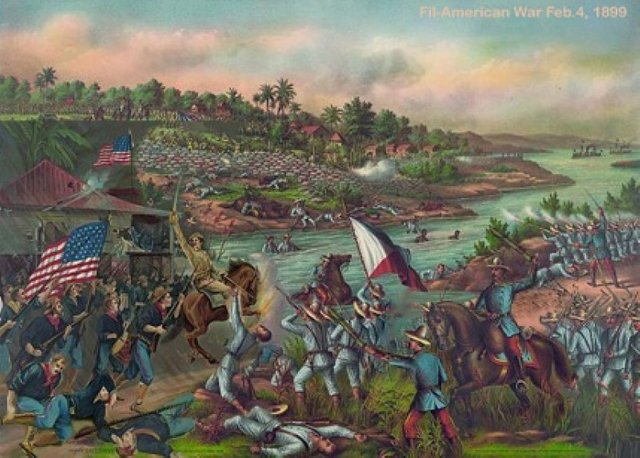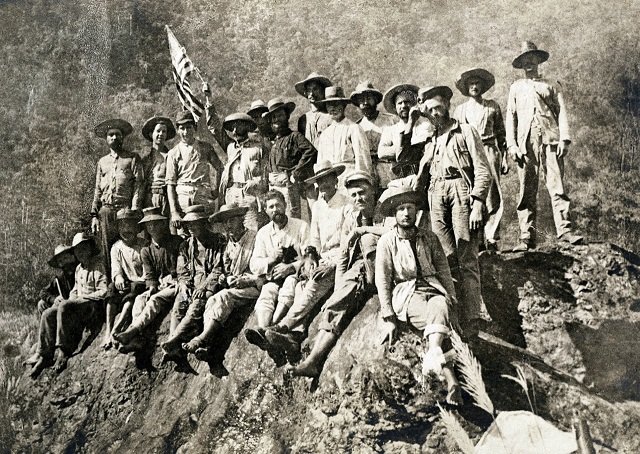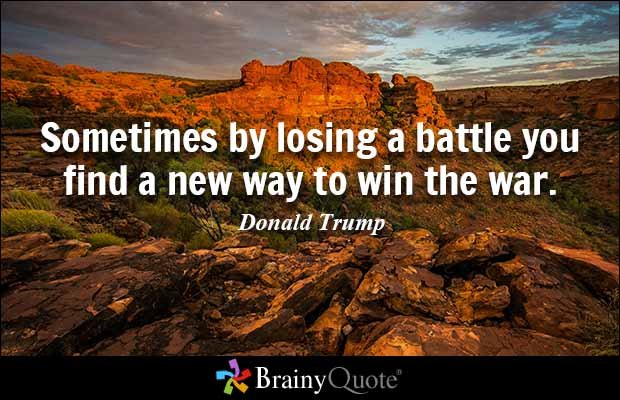Things we should know about Philippine-American war
The Philippine American War

Image Source
On August 12, 1898, the day preceding the fall of Manila, Spain, and the United States consented to a peace arrangement. Spain consented to empty every one of her troops from and surrender control over Cuba, cede Guam and Puerto Rico to the United States, which was likewise permitted to possess Manila. The last condition was impermanent while what was to be finished with the Philippines was being resolved.
In October 1898, agents of Spain and the United States met in Paris to draft a peace bargain. One of the crucial issues to be talked about was the status of the Philippines. Spain needed the United States to give back the Philippines to Spain since Manila had been involved by the Americans simply after the peace negotiation had been marked on August 12, 1898, however without any result. The United States demanded to get the Philippines.
On December 10. 1898, the Treaty of Paris, was marked in Paris, France, by both Spain and the United States. It formally finished the war between them. Under this bargain, Spain perceived the autonomy of Cuba; surrendered Guam, Puerto Rico and the Philippines to the United States; and got a $20 million installment from the United States for surrendering the Philippines.
The bargain must be confirmed by the U.S. Senate before it could produce results. It, in any case, met restriction, for the most part against the addition of the Philippines. An Anti-Imperialist League was framed to rally American general assessment against the extension. Some conspicuous Americans, for example, previous President Grover Cleveland, Andrew Carnegie, and Mark Twain, likewise contradicted the confirmation.
One reason why the United States ought not to gain the Philippines was that the Filipinos themselves were battling the Americans in the Philippines. Such a demonstration, they stated, demonstrated that the Filipinos did not have any desire to be under American run the show. They additionally contemplated that it was conflicting for the United States to disavow—through the purported Teller Amendment—any aim of attaching Cuba and afterward add the other Spanish provinces, for example, the Philippines.

Image Source
There were additionally numerous in the United States who saw the upsides of assuming control over the Philippines. Numerous preachers, for example, favored the extension. So peopled who expected that Germany may get the Philippines if the United States did not. Some favored addition to giving America an "a dependable balance" in the crowded markets of Asia.
On February 6, 1899, the U.S. Senate, by a vote of 57 to 27, approved the Treaty of Paris. The American individuals, in actuality, likewise embraced the bargain when they reelected President McKinley in the 1900 U.S. presidential decisions. Along these lines, the Philippines formally went under the management of the United States.
The Filipinos had turned out to be suspicious of the genuine thought processes of the United States in setting off to the Philippines. Indeed, they were kept by the Americans from entering Manila after its fall. Their doubts were affirmed by the Treaty of Paris under which Spain surrendered the Philippines to the United States. Neither Spain nor the United States gave Felipe Agoncillo, Aguinaldo's uncommon agent, an opportunity to introduce the desires of the Filipinos in the Paris peace talks. Doubt swung to threatening vibe, and war between the two sides ended up plainly unavoidable. The Filipinos were insulted when they discovered that Spain, which never again controlled the Philippines, had surrendered the nation to the United States.
On December 21, 1898, President William Mckinley declared his choice to keep the Philippines as an American frontier ownership. Entitled "Considerate Assimilation Proclamation," the McKinley declaration was reported in the Philippines on January 4, 1899. It expressed plainly the aim of the United States to stay for all time in the Philippines. The mission of the United States was depicted by McKinley as one of "big-hearted absorption." In a similar announcement, General Elwell Otis was named the authority of American ground drives in the Philippines, which was to "reach out by constraining American sway over this nation."

Image Source
On January 5, 1899, Aguinaldo issued a counter-declaration. He cautioned that his administration was set up to battle any American endeavor to persuasively assume control over the nation. This seemed like an announcement of war to the American military in spite of the fact that Aguinaldo had no desire to get into a war with the United States. He realized that war would just purpose untold enduring to the Filipino individuals. He was as yet confident that the circumstance could be spared by quiet arrangements amongst him and the American military pioneers in the Philippines. Aguinaldo composed General Elwell S. Otis calling for serene arrangements.
The onset of war
The pressure between the Americans and the Filipinos was great to the point that it was anything but difficult to accelerate a war. The evening of February 4, 1899, as depicted in Aguinaldo.
Reviewing the occurrence, Grayson stated:
"Around eight o'clock, Miller and I were mindfully pacing our region. We went to a fence and were attempting to perceive what the Filipinos were doing. All of a sudden, close within reach, to our left side, there was a low however unmistakable Filipino station flag shriek. It was quickly replied by a comparative shriek around twenty-five yards to one side. At that point, a red lamp flashed a flag from brick house number 7. We had never observed such a sign utilized. In a minute, something ascended gradually before us. It was a Filipino. I shouted "Stop!" and made it really uproarious, for I was acclimated to testing the officer of the protect in endorsed military style. I tested him with another noisy "end!" Then he yelled "halto!" to me. Indeed, I thought the best thing to do was to shoot him. He dropped. In the event that I didn't murder him, I figure he passed on of fear. Two Filipinos sprang out of the entryway around 15 feet from us. I called "end!" and Miller let go and dropped one. I saw that another was cleared out. All things considered, I think I got my second Filipino that t me...."
The Filipino troops let go back at the American lines and before the night was over, battling had broken out amongst Filipino and American powers. A large portion of the Filipino commandants around then was going to a move in Malolos, Bulacan Province. At the point when recounted the episode of dangers, they surged back to their units, which were at that point shooting it out with American troops.
At the point when war at long last came, Aguinaldo still attempted to stop it by sending an emissary to General Otis to bid for a conclusion to the battling. Be that as it may, Otis reacted, "battling, having started, must go ahead to the inauspicious end."

Image Source
Source:
The Filipino Americans
By: Veltisezar Bautista
Thanks for sharing this history. I am very passionate about history and how incidents like this created the world we live in today. First I did not know that America had control over the Philipines. I was aware of the Spanish influence and that Manila was a strategic harbour for the ship of the gold and silver from the Americas.
Second I realised that the same time Philipines were fighting a war against a strong power, the same happened in South Africa in that period when the Boers had to fight the British Empire.
Knowlege about history teaches us a lot of things which I think lots of people failed to do. Its not about patriotism but rather knowing our past and how we have become. Through this, we can be guided in the things we do for the betterment of a nation. Having knowledge of history is an advantage.
Agree!